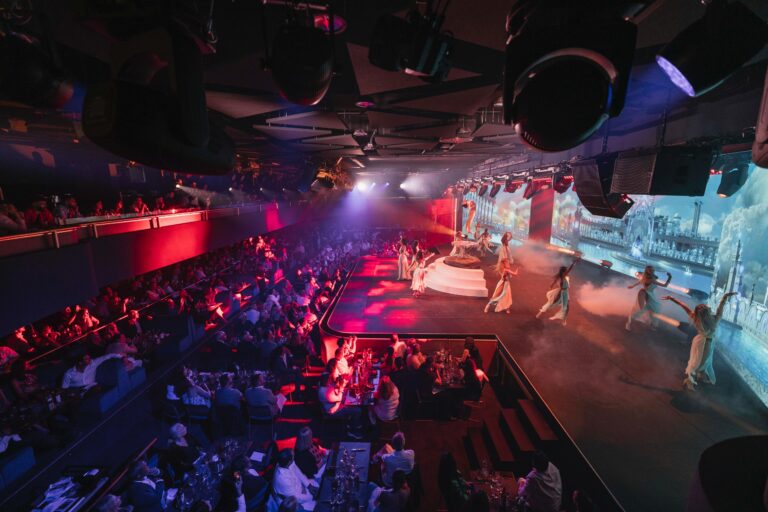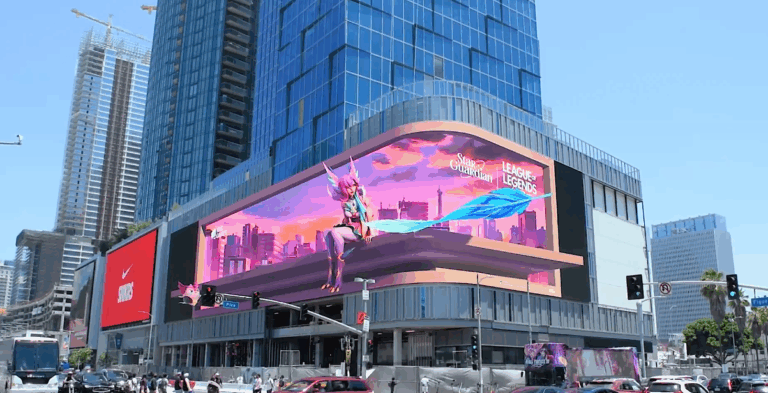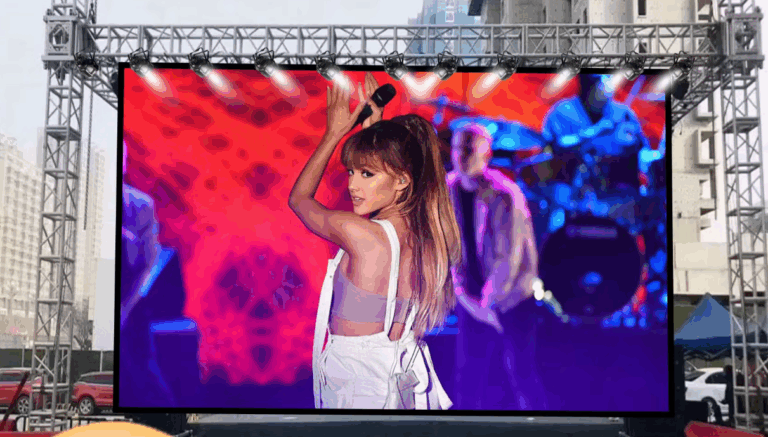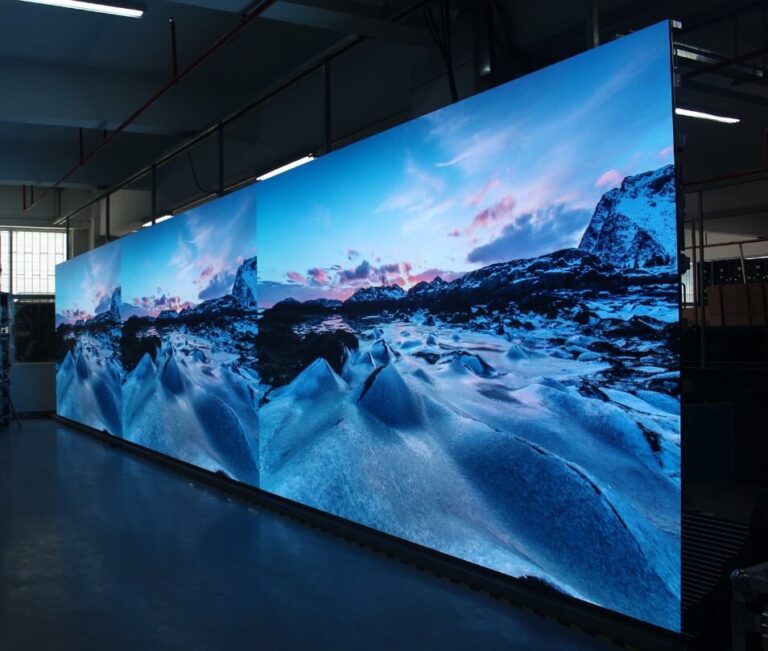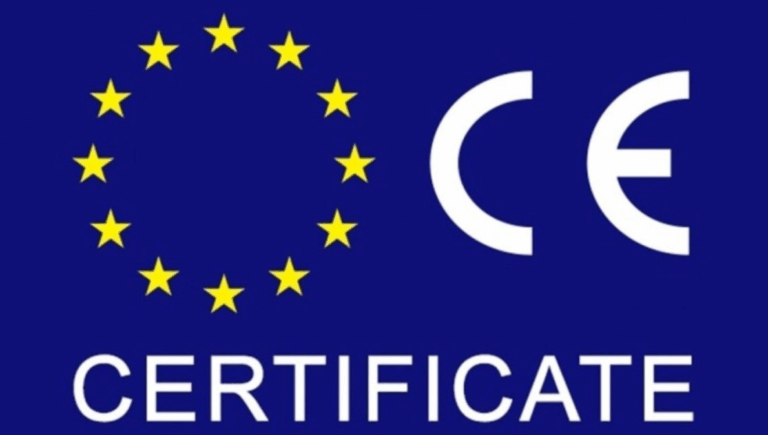Catalogue
What are DLP, LCD and LED respectively
The difference between LCD, DLP and LED
DLP, LCD or LED, which type of display is right for you?
What are DLP, LCD and LED respectively
DLP, LCD, and LED are different types of display technologies:

DLP (Digital Light Processing) : DLP is a projection display technology that uses a tiny array of digital micromirrors and a high-speed rotating color filter wheel to generate images. DLP projectors generate images on the screen by controlling the on-off state of the micromirror to adjust the reflection of light. DLP technology has the characteristics of high contrast, good color saturation and fast response, and is often used in home theater, commercial presentations and large event projection displays.

LCD (Liquid Crystal Display) : LCD is a liquid crystal display technology that uses the optical properties of liquid crystal molecules to control the transmission and blocking of light to display images. LCD display is composed of LCD panel, backlight and electronic driver. When an electric current passes through a liquid crystal molecule, the liquid crystal distorts the path of light, thus changing the polarity of the light that passes through. LCD technology has the characteristics of high color accuracy, viewing Angle stability and low energy consumption, and is widely used in television, computer monitors and mobile devices.

LED (Light Emitting Diode) : LED is a light-emitting diode based on the principle of solid-state light emitting. LED displays produce images by controlling millions of tiny LED lights made up of pixels. Each LED light can be adjusted independently for high contrast and color saturation. LED display has the advantages of high brightness, high reliability, long life and low energy consumption. LED technology is widely used in outdoor billboards, sports venues, stage shows and electronic signs and other occasions.
These display technologies have their own characteristics and advantages in different application scenarios and needs, and the selection of suitable display technologies needs to consider the application environment, image quality, power consumption requirements and budget.
The difference between LCD, DLP and LED
How it works:
LCD: Liquid crystal displays use the optical properties of liquid crystal molecules to control the transmission and blocking of light, and display images by illuminating the LCD panel with a backlight.
DLP: Digital light processing technology uses a tiny array of digital micromirrors and a color filter wheel to generate an image by controlling the reflection of light.
LED: Light-emitting diodes emit light, and LED displays produce images through millions of tiny LED lights made up of pixels.
Image quality:
LCD: LCD displays have high color accuracy, viewing Angle stability, and contrast, and can display detailed images, especially on high-resolution displays.
DLP: DLP projection technology features high contrast, good color saturation and fast response, which can produce vivid images on large screens.
LED: With high brightness, contrast and color saturation, LED displays provide clear, bright images in both indoor and outdoor display environments.
Scope of application:
LCD: LCD is widely used in television, computer monitors, mobile devices and tablet computers, suitable for indoor use.
DLP: DLP projection technology is mainly used in projectors, suitable for home theater, commercial presentations and large-scale events where large screen projection is required.
LED: LED display is widely used in outdoor billboards, sports venues, stage shows and electronic signage and other fields, suitable for indoor and outdoor environments.
Energy consumption and life:
LCD: LCD displays generally have lower energy consumption, but the power consumption of backlight is higher.
DLP: DLP projectors may consume more energy in high brightness mode, but they can reduce power consumption in energy saving mode.
LED: LED display has low energy consumption, LED lamp life is long, can reach tens of thousands of hours.
In summary, LCD, DLP and LED have different working principles, application ranges and characteristics. Choosing the right technology depends on the specific application needs, such as display environment, image quality requirements, energy consumption and budget.
Where are LCD, DLP and LED used respectively
LCD (Liquid Crystal Display) applications:
Television and computer monitors: LCDS are widely used in television and computer monitors, including home entertainment, office and personal use.
Mobile devices: LCDS are widely used in mobile devices such as smartphones, tablets and portable game consoles.
Automotive display: LCDS are used in cars for dashboard displays, navigation systems and entertainment systems.
DLP (Digital Light Processing) applications:
Projection display: DLP technology is commonly used in projectors for home theater, business presentations, education, and large event projection displays.
3D printing: DLP projection technology is also used in 3D printers to create three-dimensional models of objects by curing liquid photosensitive resins.
LED (Light Emitting Diode) applications:
Indoor and outdoor display: LED display is widely used in outdoor billboards, sports venues, stage shows and electronic signs and other indoor and outdoor display environment. This year, Dubai outdoor led display how much?
Vehicle lighting: leds are used in automotive headlights, taillights and indicators, as well as in the lighting of motorcycles, bicycles and other vehicles.
Home lighting: LED bulbs are widely used in the field of indoor lighting, providing energy saving, dimmable and long life lighting solutions.
Stage and stage lighting: leds are used for stage lighting, lighting effects and stage backgrounds, providing rich colors and programmable light effects.
Interior decoration: leds are used for interior decoration lighting, such as colored lamp strips, recessed fixtures and decorative lighting.
The above list only lists some common application scenarios of LCD, DLP and LED, in fact, these display technologies have more applications in various fields. Choosing the right technology depends on the specific needs and requirements.
DLP, LCD or LED, which type of display is right for you?
Choosing the type of display that is right for you depends on your specific needs and application scenarios. Here are some features of DLP, LCD, and LED display effects to help you make your choice:
DLP display effect:
High contrast and color saturation: DLP display effects typically have excellent contrast and color performance, producing bright, vivid images.
Fast response: The DLP display effect is very fast and is suitable for displaying fast dynamic content, such as videos, games and sports competitions.
Good motion processing ability: DLP display effects perform better in the processing of fast moving images, which can reduce blur and residual effects.
LCD display effect:
Good color accuracy: LCD display effects with high color accuracy and color depth are suitable for applications that require accurate color reproduction, such as graphic design and professional presentations.
Higher resolution: LCD display effects typically offer higher resolution options for applications that require high-definition images, such as watching high-definition movies and demonstrating detailed images.
Lower operating noise: LCD display effects generally produce lower operating noise than DLP display effects and are suitable for situations that require a quiet environment, such as conference rooms and classrooms.
LED display effect:
High brightness and long life: The LED display effect has a high brightness output and long life, does not require frequent bulb replacement, and is suitable for long time use and commercial applications.
Energy saving and environmental protection: LED display effects provide an energy-efficient projection solution that consumes less energy and reduces environmental impact. Free to teach you 9 aspects to improve the display effect of LED billboards.
Smaller size and portability: LED display effects are usually smaller than traditional display effects, easy to carry and move, suitable for mobile presentations and outdoor activities.
Taking into account your image quality, response speed, color accuracy, resolution requirements, as well as budget, use environment and mobile needs, you can choose the type of display effect that is right for you. It is recommended to consult with suppliers or professionals before purchasing for more specific advice and technical support.

